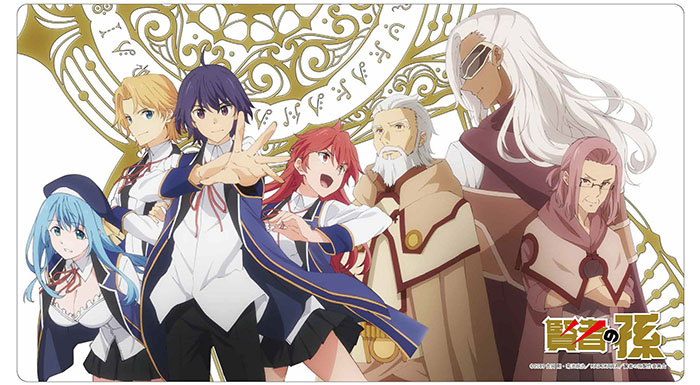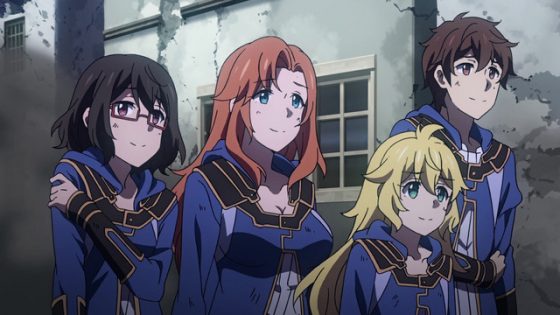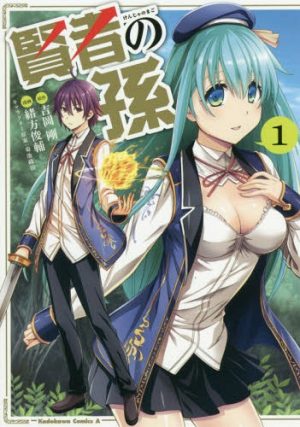
Shin Wolford is originally from our world, but died and was reincarnated into another one full of magic as a baby. True to similar parodies and tropes, he’s adopted and raised by one of the most powerful mages of all time, but his “family” has forgotten to teach him something- common sense! We follow Shin, watching him come to understand that his scientific way of viewing magic isn’t shared by others and that he’s actually one of, if not THE most, powerful magician of his generation. Though he still has much to learn about the world and the anime focuses on Shin developing his common sense in the new world, there’s much more to the series.
While the story of a guy transported to another world and ending up becoming extremely overpowered isn’t something too new to us, we want to explore a bit more about Shin and the world he’s ended up in. We’ll take a look at the tropes and parodies of the anime, dig into the logistics of magic in this world, and talk about the different kingdoms essential to understanding the main plot.
It’s a Serious Parody With a TON of Tropes.
One thing that many people have complained about is how overpowered the main character Shin Wolford is. However, for this anime, it’s practically essential that he is! After all, it’s quite a big parody, albeit a serious one. While the story is centered around a magic-obsessed, overpowered fifteen year old from another world, the series tries to keep a good balance of seriousness combined with plenty of tropes. Tropes are something we all have a love-hate relationship with, but let’s take a look at some of the big ones that contribute to this anime being a parody.
You’ve got Shin, the protagonist who was reincarnated after getting hit by a truck, and is overpowered beyond the current living legend, Merlin. Shin has already taken down demons at just ten years old and even created spells that even Merlin can’t grasp or use. He even falls in love at first sight with the second girl he ever sees, Sizilien, effortlessly saving her from a pompous guy bent on marrying her. The guy ends up becoming a demon… which Shin promptly kills. There are tons more, but this just helps our conclusion that while this is a comical slice of life-style isekai anime, it’s also a huge parody ripping on a lot of the most common themes and tropes.
Magic Is Based on Science… Mostly.
Shin is from our world and studied science growing up. He fundamentally understands that, like in chemistry, if you add certain gasses or compounds together, you can achieve different results. While other kids his age are using strange incantations and getting only wisps of magic out, Shin’s effortlessly destroying targets...even when he’s holding himself back. This is because his mind understands what elements he needs to put into his spells, how they’ll react with each other, and how to visualize the end result that he wants to happen. His classmates have a tough time understanding the amount of concentration and knowledge needed to make these things possible. Shin’s dangerous enough with only his original spells that could shake the delicate balance of the world, like with his gate and flying spells.
However, Shin isn’t the only one who understands that magic is a form of science. After allowing his anger to overcome him and becoming a demonoid himself, Oliver Schtrom conducts illicit research in the Earlshide Kingdom, eventually figuring out a way to create demonoids. Kurt von Rietsburg, the guy obsessed over Sizilien, becomes his first successful one. After that, he overtakes the Bluesphere Empire where he’s originally from, and forces all of the citizens there to become demonoids and attack the Earlshide Kingdom which Shin and his friends now protect as the Ultimate Magicians.
The Kingdom and the Empire.
The first place we learn about is the Earlshide Kingdom of which Diseum von Earlshide, whom Shin calls “Uncle Dis,” is the king. Merlin is on good terms with King Earlshide after he took down the first demon with his partner, Melinda. The aristocrats of the Kingdom believe that they must do everything in their power to protect the people, so they require mandatory education for their children until they’re 15 years old. Their military is divided into the Knight Order and Magic Division, with the mages learning how to support and fight with the knights in battle. The Earlshide Kingdom has alliances with all other countries except the Bluesphere Empire.
The Bluesphere Empire is quite different from the Earlshide Kingdom, which much of season 1 takes place in. First, it’s made of many unified and conquered countries with the upper-nobles of each smaller country being given power within certain areas. Unlike the Earlshide Kingdom, the nobles of the Bluesphere Kingdom see their commoners as people to exploit. Fewer commoners mean less tax revenue, and since the living conditions are extremely poor, the commoners start leaving the Empire. After jealous nobles use commoners to kill Oliver Schtrom’s wife, Oliver demonizes and slaughters the town before leaving to conduct his illegal demonizing experiments. After his successful attempt on Kurt, he returns to the Bluesphere Empire and demonizes the citizens to use them in battle against the Earlshide Kingdom and Shin, which is where the end of season 1 leaves off.
Final Thoughts

Kenja no Mago is a compilation of a wide variety of genres, including comedy, slice of life, and action. It’s not going to be an anime that everyone loves, but it’s certainly highly entertaining and has a great storyline, especially if you can get past all the nods to other isekai anime and tons of tropes. With how season 1 left off, we really can’t wait to get to season 2!
We hope you enjoyed our brief look into the world of Kenja no Mago and can understand some of the aspects that help make it special. Let us know what you think in the comments and if you’re going to watch season 2!
Recommended Post
Why You NEED to Watch Kenja no Mago (Wise Man's Grandchild)!
Recommended Post




